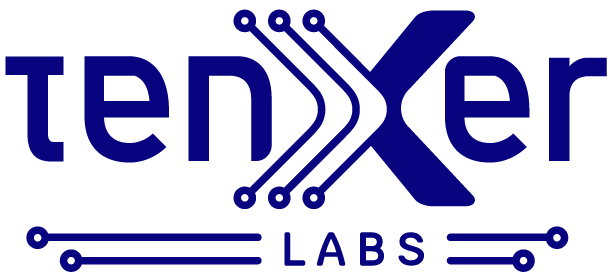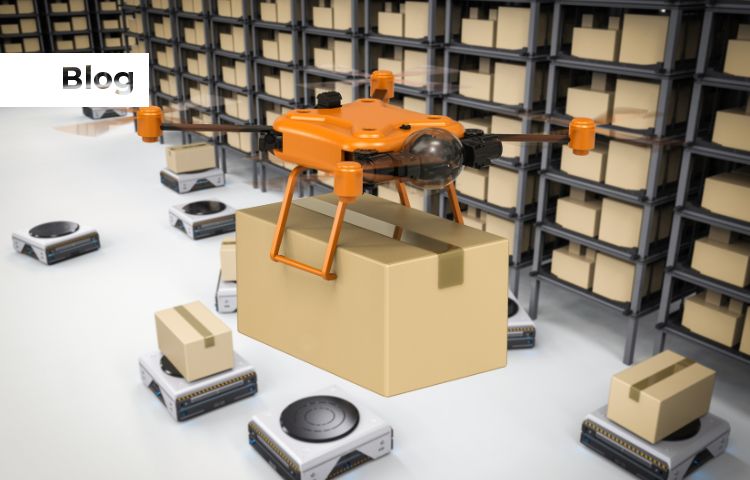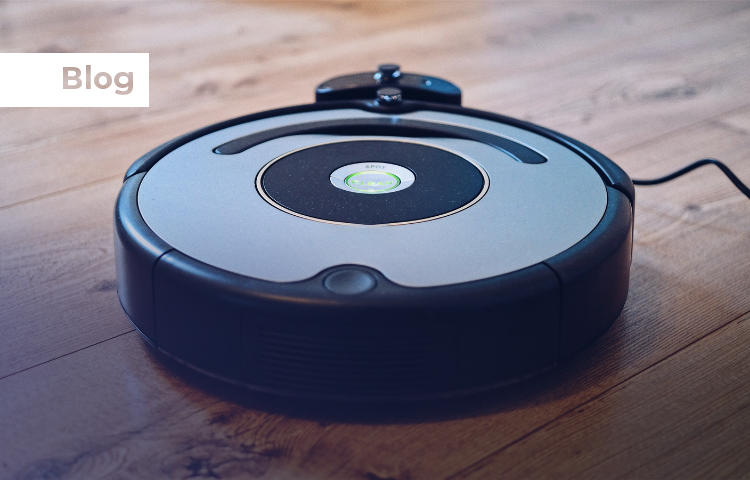As electronics experts with decades of experience in designing Physical AI solutions, We have witnessed the transformative shift toward embodied intelligence—where AI systems interact seamlessly with the physical world. Physical AI encompasses robotics, autonomous drones, wearable devices, and edge IoT systems that require real-time decision-making in dynamic environments. At the heart of these innovations lie Machine Learning System-on-Chip (MLSoC) products, engineered to deliver generative AI (GenAI) inference with unprecedented efficiency. The holy grail? Achieving this under 10W power consumption without compromising performance, thermal integrity, or integration scalability is critical for time-to-market (TTM) acceleration.
In this article, we focus on one of the most sought-after problems in Physical AI: enabling long-endurance autonomous drones for surveillance and delivery applications. These drones demand MLSoCs that run GenAI models for tasks like real-time object detection, path planning, and anomaly generation (e.g., synthesizing scenarios for predictive maintenance) while operating on limited battery power. Traditional development cycles for such MLSoCs are plagued by bottlenecks – lengthy hardware procurement, lab setup delays, and iterative testing that can stretch months. Enter remote labs on platforms like LiveBench by TenXer Labs, which revolutionize exploration, evaluation, and go-to-market (GTM) strategies. We dive into the challenges, how remote labs address them, and specifically how TenXer Labs can build these setups to empower any engineer with instant, remote testing capabilities. This targeted, application-specific exploration aims to provide actionable insights for engineers and product teams pushing the boundaries of low-power AI at the edge.
The Sought-After Challenges in Low-Power MLSoC for Drone-Based Physical AI
Autonomous drones represent a pinnacle application for Physical AI, where MLSoCs must process GenAI inference—such as generating synthetic images for training on-the-fly or inferring environmental narratives from sensor data—all while hovering in power-constrained scenarios. The market for such drones is exploding: projections indicate a CAGR of over 25% through 2030, driven by sectors like agriculture, logistics, and public safety. However, designing MLSoCs that deliver GenAI under 10W poses multifaceted problems that hinder rapid iteration and commercialization.
The Challenge: Enabling GenAI Inference Under 10W for Autonomous Drones
Power Efficiency | Thermal Integrity | Seamless Integration & TTM |
Goal: Maximize drone flight time by keeping power consumption below 10 watts during complex GenAI tasks like real-time object detection and path generation. | Goal: Prevent the MLSoC from overheating in compact, harsh environments, which can slash performance by 30-50% and risk mission-critical failures. | Goal: Ensure flawless compatibility with drone sensors and avionics, while drastically reducing time-to-market (TTM) by avoiding hardware procurement delays. |
The Hurdle: Conventional chips running GenAI models consume 20-50W, limiting drone endurance to under 30 minutes. | The Hurdle: High-performance inference generates significant heat, and physical lab testing for thermal profiles creates long feedback loops. | The Hurdle: Sourcing evaluation kits costs upwards of $10,000 per iteration and can take weeks or months, stifling agile development. |
First, power efficiency without performance sacrifice is paramount. GenAI models, like lightweight variants of Stable Diffusion or GPT-inspired architectures adapted for edge, typically consume 20-50W on conventional chips due to intensive matrix multiplications and attention mechanisms. For drones, this translates to flight times under 30 minutes, limiting practical deployment. Engineers must optimize neural processing units (NPUs) and accelerators to handle 1-5 TOPS (Tera Operations Per Second) at sub-10W, often using techniques like quantization (reducing precision from FP32 to INT8) or sparse computing. Yet, evaluating these optimizations on real hardware is tricky—simulations fall short in capturing real-world variability, such as voltage fluctuations or workload spikes during GenAI inference for obstacle avoidance.
Second, thermal integrity emerges as a critical hurdle. Drones operate in harsh environments—extreme temperatures, high altitudes—with compact form factors that exacerbate heat dissipation. An MLSoC exceeding thermal thresholds (e.g., 85°C junction temperature) triggers throttling, slashing inference speed by 30-50% and risking system failures. Testing thermal profiles requires precise instrumentation like IR cameras and thermocouples, but traditional labs demand physical access, delaying feedback loops. In drone applications, this means prototypes might overheat during prolonged GenAI tasks, such as generating real-time maps, compromising mission reliability.
Third, seamless integration and TTM scalability compound the issues. MLSoCs must integrate with sensors (LiDAR, cameras), actuators (motors), and communication modules (5G/LoRa) in a heterogeneous system. Compatibility glitches—e.g., interface mismatches between the MLSoC’s PCIe lanes and drone avionics—can derail projects. Scaling to GTM involves validating across variants, but sourcing multiple evaluation kits (EVKs) incurs costs upward of $10,000 per iteration, plus shipping delays of weeks. For startups or distributed teams, this stifles agility, especially when iterating on GenAI firmware for under-10W efficiency.
These challenges aren’t theoretical; they’ve stalled innovations in low-power AI accelerators, which promise real-time edge GenAI under 10W but face hurdles in thermal throttling and model compression. Surveys on such accelerators highlight that devices under 10W struggle with large model sizes (e.g., 1-10B parameters for GenAI) and latency demands below 100ms for drone navigation. In Physical AI, where drones must “think” physically—generating actions based on inferred physics—these pain points amplify, demanding faster evaluation cycles to achieve market-ready scalability.
How Remote Labs on LiveBench Accelerate MLSoC Exploration and Evaluation
LiveBench, developed by TenXer Labs, is a cloud-based platform that democratizes access to real hardware labs, enabling engineers to explore and evaluate MLSoCs remotely via a web browser. Unlike simulations, it connects users to physical EVKs in secure data centers, complete with test equipment, sensors, and live video feeds. This setup is tailor-made for accelerating Physical AI development, particularly for drone-centric MLSoCs targeting GenAI under 10W.
In the exploration phase, engineers can instantly access pre-configured labs featuring next-gen MLSoCs like Renesas’ RZ/V2L (a SMARC module with DRP-AI accelerator, delivering up to 4 TOPS at ~5W) or analogous low-power chips. For drone applications, imagine logging into LiveBench and selecting a lab rigged with a drone-like setup: cameras for vision AI, IMUs for motion simulation, and power analyzers. You can upload custom GenAI models—say, a pruned diffusion model for synthetic scene generation—and run inference workloads remotely. Real-time metrics stream back: power draw (e.g., 7.2W peak during 512×512 image generation), FPS (frames per second) for inference, and latency breakdowns. This slashes exploration time from weeks (awaiting EVK shipments) to minutes, allowing rapid hypothesis testing, such as tweaking sparsity levels to dip under 10W without dropping accuracy below 90%.
Evaluation benefits from LiveBench’s AI-powered tools, like the Knowledge Assistant, which parses datasheets and suggests optimizations. For thermal integrity, labs integrate thermal cameras and environmental chambers to simulate drone flight conditions—e.g., 40°C ambient with wind emulation. Engineers can monitor junction temperatures during prolonged GenAI runs, identifying hotspots that might cause throttling. In one scenario, testing an MLSoC for drone surveillance might reveal that GenAI inference spikes heat by 15°C, prompting redesigns like adding heat sinks—all validated remotely without physical prototypes. Performance metrics, such as TOPS/W efficiency, are captured via oscilloscopes and logic analyzers, ensuring no sacrifices in speed (e.g., maintaining 30 FPS for real-time path generation).
Integration testing shines here too. LiveBench labs can mimic drone ecosystems, interfacing MLSoCs with peripherals like motor drivers or sensors. Engineers test seamless plug-and-play, verifying that GenAI outputs (e.g., generated commands) integrate without latency spikes. This holistic evaluation uncovers issues early, enhancing TTM scalability by enabling parallel testing across global teams— no more shipping hardware or coordinating lab access.
Quantitatively, LiveBench reduces evaluation cycles by 90%, from 30 days to 3, per TenXer Labs’ data. For GTM, it facilitates customer demos: sales teams can showcase MLSoC performance live, accelerating partnerships. In drone Physical AI, this means faster certification for applications like delivery fleets, where under-10W GenAI enables extended flights (e.g., 60+ minutes) without performance hits.
Accelerating MLSoC Development Cycles
The Old Way: Traditional Hardware Development | The New Way: Remote Labs on LiveBench |
Timeline: 3-6 Months | Timeline: Minutes |
Step 1: Hardware Procurement (4-8 Weeks) | Step 1: Instant Access (Minutes) |
Step 2: Lab Setup & Configuration (2-4 Weeks) | Step 2: Select Pre-Configured Lab (Minutes) |
Step 3: Manual Testing & Iteration (4-10 Weeks) | Step 3: Remote Testing & Real-Time Data (Minutes) |
Step 4: Debugging & Re-Work (Ongoing) | Step 4: Collaborate & Scale (Instantly) |
Outcome: Slow Time-to-Market & High Costs | Outcome: Accelerated Innovation & Reduced Costs |
Building Remote Labs with TenXer Labs for Instant, Remote Parameter Testing via LiveBench
TenXer Labs excels in constructing these remote labs, making them accessible to any engineer worldwide. The process is methodical, scalable, and customized for MLSoC parameters like power, performance, thermal, and integration – ideal for Physical AI innovations.
The LiveBench Advantage in Numbers
Metric | Description |
90% | Faster Evaluation Cycles Reduce testing time from an average of 30 days down to just 3, accelerating your entire development timeline. |
$10k+ | Saved Per Iteration Eliminate the need to purchase costly evaluation kits for every new test or team member, drastically lowering R&D expenses. |
24/7 | Global, On-Demand Access Empower distributed engineering teams to test hardware anytime, anywhere, fostering seamless collaboration and innovation. |
<10W | Precision Low-Power Validation Utilize integrated power analyzers to accurately measure and optimize MLSoC performance for critical sub-10-watt applications like autonomous drones. |
To start, TenXer Labs collaborates with MLSoC vendors (e.g., Arm-based providers) to procure EVKs and reference designs. They set up dedicated lab benches in secure, climate-controlled facilities, equipped with high-precision instruments: power supplies (for <10W granularity), multimeters, thermal imagers, oscilloscopes, and programmable loads to simulate drone workloads. For GenAI-specific testing, they integrate GPUs/NPUs with software stacks like TensorFlow Lite or PyTorch Mobile, allowing model deployment.
Next, connectivity is key. TenXer Labs wires hardware to edge servers with low-latency interfaces (e.g., USB, Ethernet) and installs webcams for visual feedback—crucial for observing thermal behavior or physical integrations. Custom software layers enable remote control: users interact via a intuitive UI on LiveBench, adjusting voltages, running scripts, or triggering GenAI inferences. AI assistance automates setups, like configuring thermal profiles for drone heat simulations.
Security and scalability are baked in. Labs use encrypted channels (TLS/SSL) and role-based access, ensuring IP protection. TenXer Labs scales by modularizing benches—adding more EVKs as demand grows—and offers reservation systems for 24/7 availability. For parameters:
- Power Consumption: Integrated analyzers measure real-time draw, logging data for GenAI bursts (e.g., <8W average for drone vision tasks).
- Performance: Benchmark tools run standardized tests, outputting metrics like inference time and accuracy.
- Thermal Integrity: Sensors and chambers test under stress, generating reports on throttling risks.
- Integration: Peripherals simulate drone assemblies, validating end-to-end flows.
Any engineer accesses this via single sign-on, with free basic tiers for initial tests. TenXer Labs provides tutorials, webinars, and support for custom lab builds—e.g., tailoring for specific drone sensors. This empowers distributed teams to test instantly, remotely, fostering collaboration and slashing GTM timelines.
In conclusion, for Physical AI in autonomous drones, remote labs on LiveBench are game-changers, addressing power, thermal, and integration challenges head-on. By partnering with TenXer Labs to build these setups, engineers can propel next-gen MLSoCs to market faster, delivering GenAI under 10W that truly embodies intelligence in the physical realm. As we push toward ubiquitous AI, platforms like this will be indispensable.
Empower Your MLSoC Business to Lead the Market
Business leaders in the MLSoC industry: If you’re striving to capture greater market share in the booming Physical AI sector, don’t let traditional development bottlenecks hold you back. Leverage remote labs on LiveBench by TenXer Labs to accelerate your product exploration, evaluation, and GTM—ensuring your low-power GenAI solutions reach customers faster and more efficiently. Contact TenXer Labs today at contact@tenxerlabs.com or visit tenxerlabs.com/livebench to explore 100+ live labs and discover how we can customize remote labs for your MLSoC portfolio.
Seize the competitive edge—transform your innovation pipeline now!





